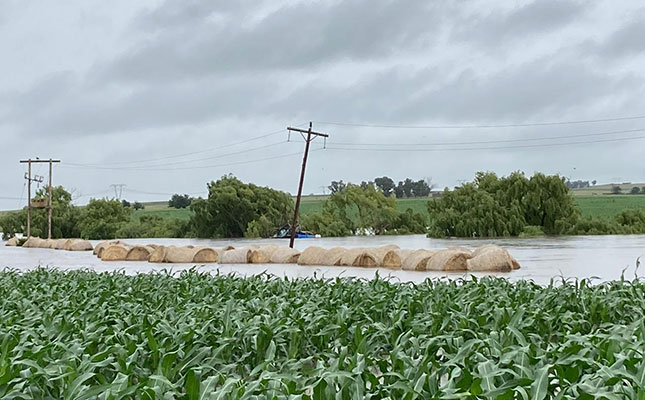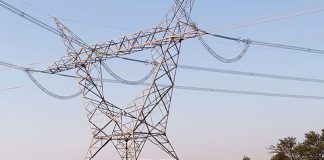
Photo: Free State Agriculture
It is too early to determine the extent of the damage caused to grain plantings following extremely high rainfall in parts of the western Free State during the past two weeks, but it can be assumed that the damage is extensive.
This was according to Jakkals le Roux, member of the Free State Agriculture (FSA) executive board. He told Farmer’s Weekly that the districts of Wesselsbron, Bultfontein and Hoopstad had been particularly hard hit.
“Bultfontein, for instance, had received more that its average annual rainfall of about 500mm since October 2020. Although more maize in the affected areas had nearly reached the adult stage, the longer the plants remained waterlogged, the bigger the risk of the roots dying off because of a lack of oxygen in the soil,” Le Roux explained.
Anton Botha, a maize producer near Bultfontein, said the Protespan area bore the brunt of the flooding, with about 400mm of rainfall received in the area since the beginning of December. According to him, the fact that the rain fell on “deep water table lands” exacerbated the situation.
“Water table soils with a depth of more than 2m are much more prone to water damage than soils with a depth of about 1,5m. The situation has deteriorated to such an extent that one homestead in the area was flooded earlier this week,” he said.
According to a grain producer near Wesselsbron, Chris Schoonwinkel, grain farmers along the road between Wesselsbron and Hoopstad had also received excessive rainfall since the beginning of 2021.
Rainfall of between 280mm and 300mm had been recorded in the area since the last week of December.
“At the moment, water is draining from our area in the direction of the Vaal River, but is damming up in lands closer to the river because of a slight topographical rise. The affected producers are now trying all they can to divert the water to the river by means of drainage furrows, among other [measures],” he explained.
According to Koot Naude, a regional representative for FSA in the Ngwathe district, which includes towns such as Heilbron, Edenville and Parys, a major concern was the condition of roads in the district, which was already bad, but had deteriorated even more due to the rain, and in some parts roads were now completely impassable.
In a media statement, FSA said that parts of Nketoana district, with towns such as Reitz and Lindley, received 100mm of rain over the first weekend of January, also worsening the condition of roads in this area.
Derek Matthews, Grain SA chairperson, said this underlined the complex and challenging conditions grain producers had to contend with. Many of those farmers affected by the rain damage had just started to recuperate financially after up to seven years of drought.
“This is a harsh reminder of how difficult it is to produce grain in South Africa, especially in the absence of support systems such as disaster relief from the state, as well as the increasing reluctance from financial institutions to extend production credit,” he added.












